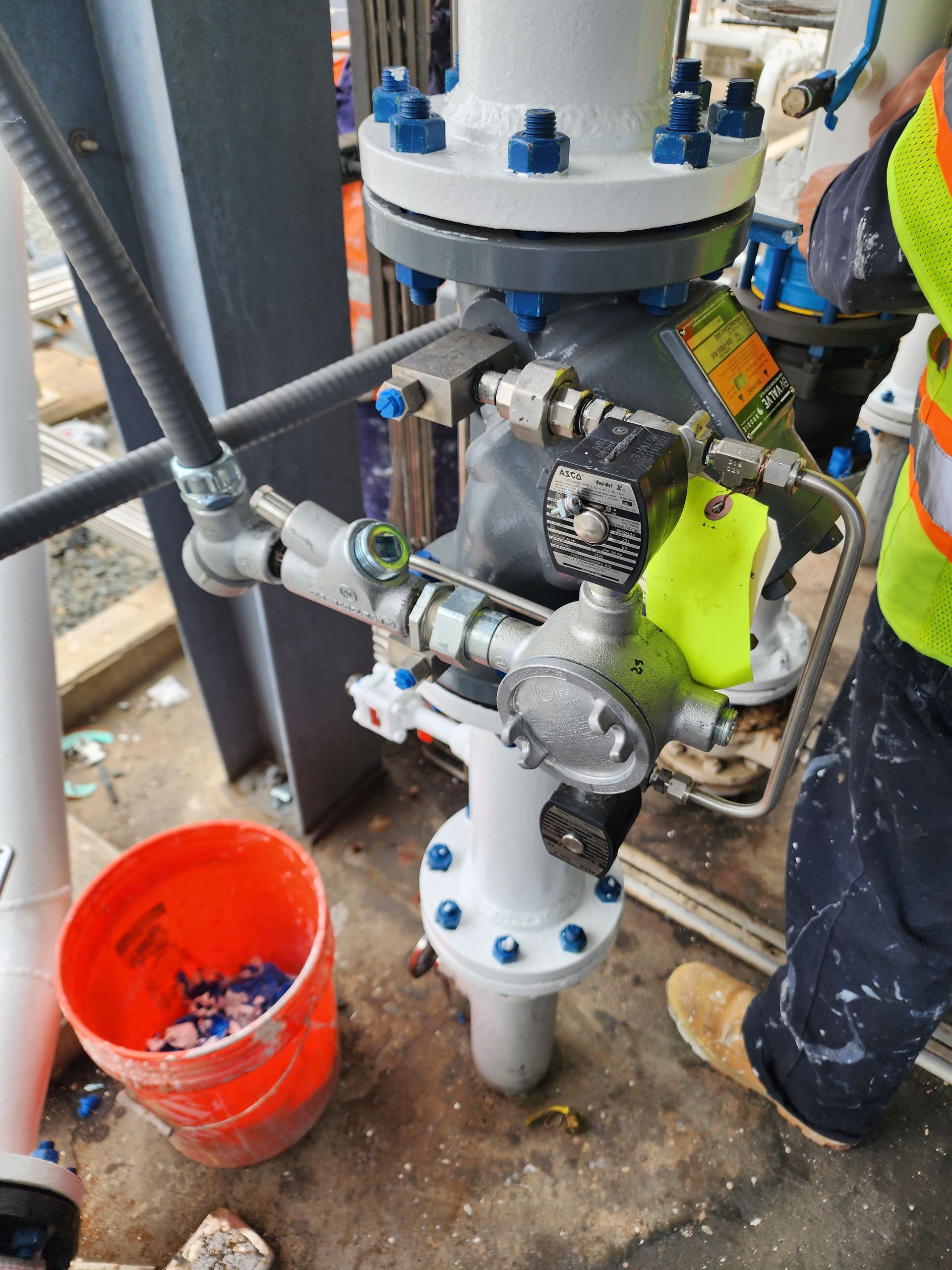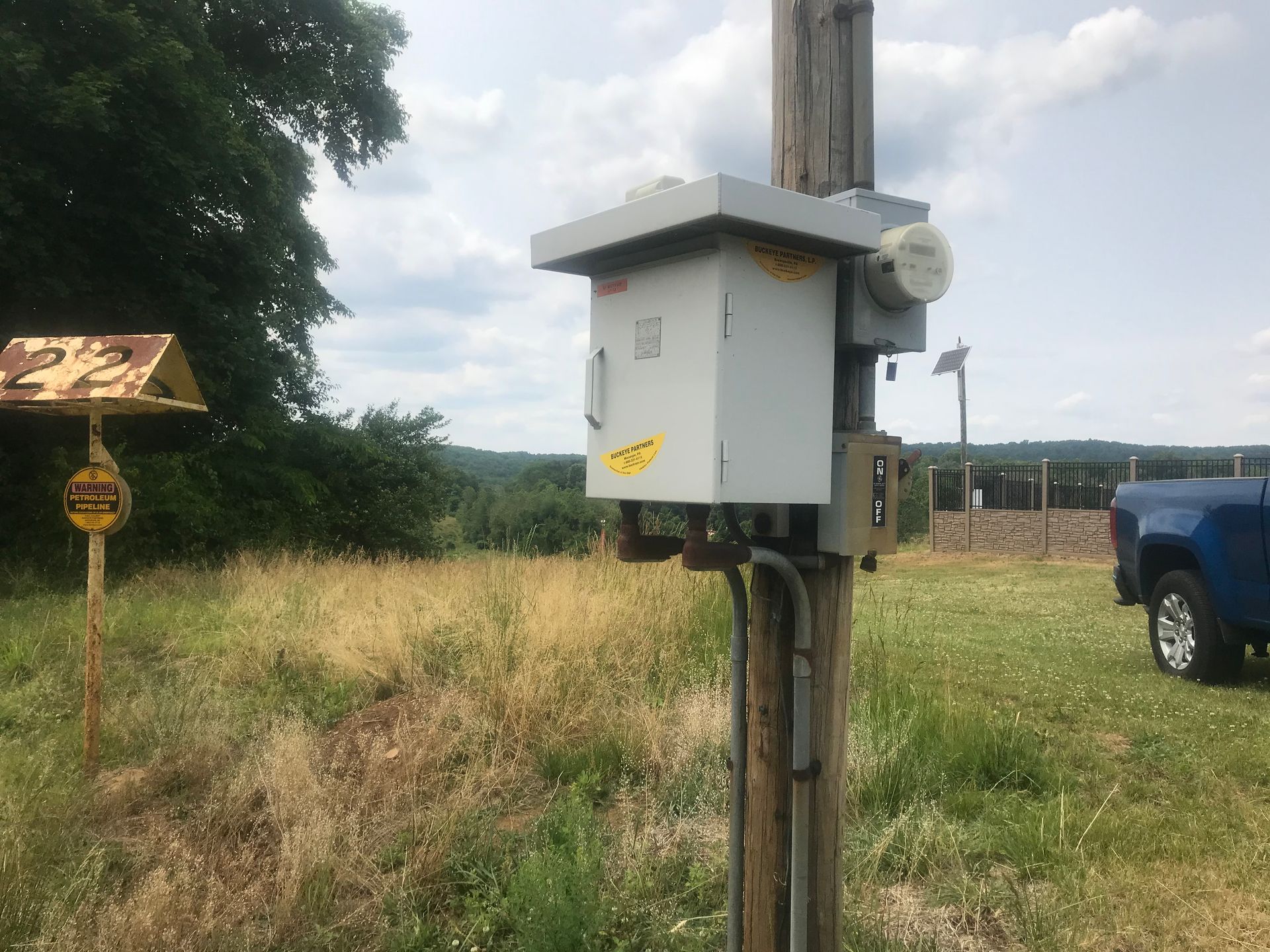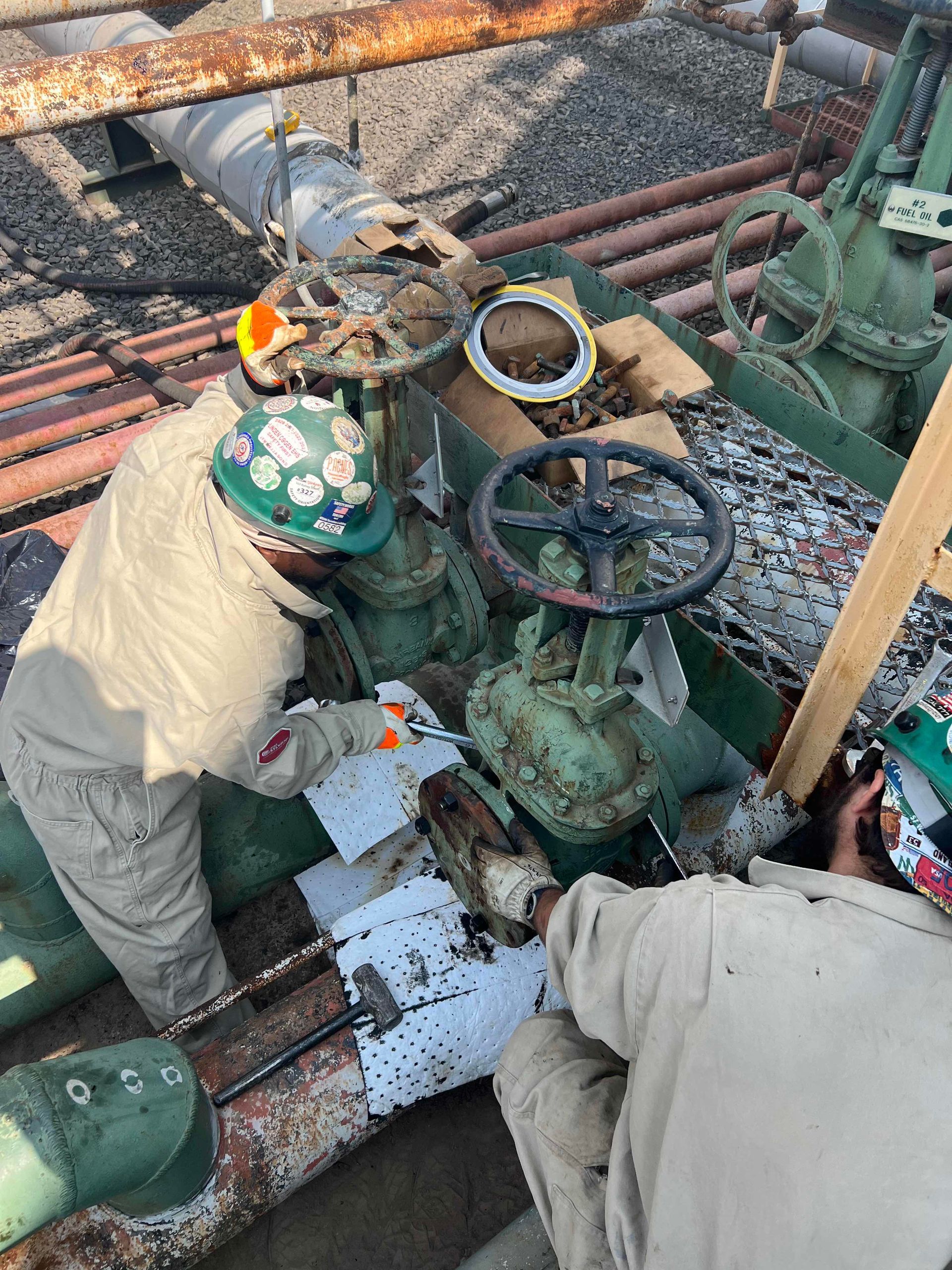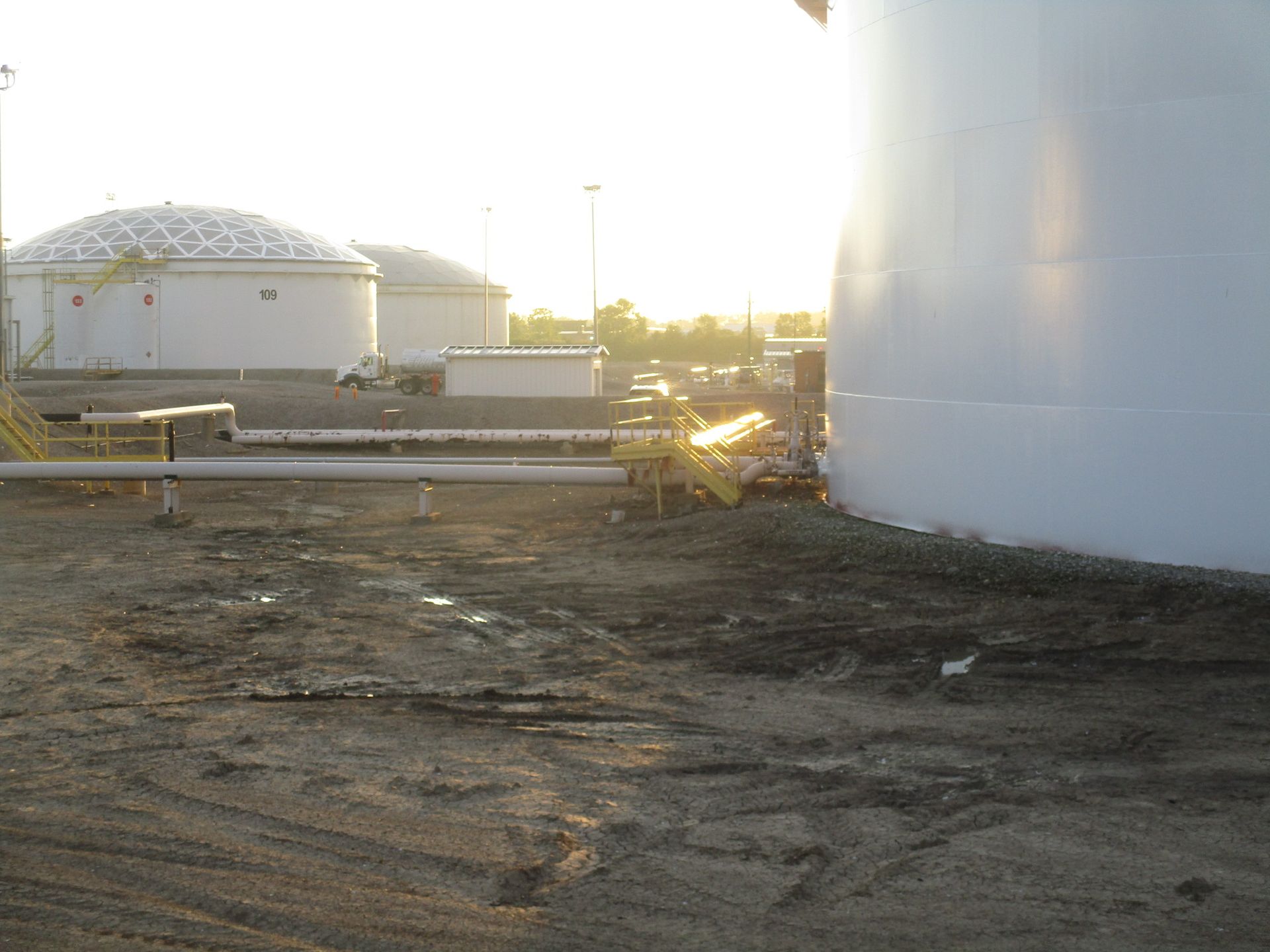BLOG
Spyglass Solutions Blog
The construction inspection industry is rapidly evolving. It is critical industry specialists stay ahead of cutting-edge developments. Our blog will keep you informed and entertained.

09 Oct, 2023
The fluctuating landscape of the oil & gas sector is marked by stringent regulations and high-risk environments. In this context, NCCER (National Center for Construction Education and Research) Qualification stands out as an essential framework, ensuring both compliance and competency. 1. Enhanced Regulatory Compliance NCCER qualification educates professionals on crucial industry standards and regulations, promoting stringent adherence and mitigating the risks of non-compliance in oil & gas operations. 2. Building Competency and Skills This qualification develops essential skills and knowledge, enabling professionals to navigate the intricate dynamics and potential challenges inherent in the oil & gas sector. 3. Safety and Risk Management Through comprehensive training modules, NCCER certification emphasizes the importance of safety protocols and effective risk management strategies, thus contributing to the reduction of accidents and environmental impacts. 4. Workforce Empowerment NCCER qualification empowers the workforce with the capabilities required to optimize operational efficiency and address complex issues, thereby enhancing productivity and overall performance in the sector. 5. Industry Credibility Possessing NCCER qualification reinforces the credibility of professionals and organizations, demonstrating a commitment to quality and excellence in the competitive oil & gas market. NCCER Qualification is pivotal for professionals in the oil & gas sector, enhancing compliance, building competency, managing risks, empowering the workforce, and bolstering industry credibility. This comprehensive approach to training ensures that oil & gas operations are conducted safely, efficiently, and in accordance with established regulations, fostering sustainability and progress in the sector. Disclaimer The content in this blog is for informational purposes only and is provided “as is” with no warranties. Spyglass Solutions is not responsible for any errors or inaccuracies and is not liable for any damages or losses incurred through use. Information may have been derived from external sources, and we do not guarantee its accuracy or completeness. Users should verify information independently and consult with a qualified professional before making decisions based on this content. Use of this blog signifies acceptance of these terms, releasing Spyglass Solutions from all liability relating to this content. External links are not under our control, and we bear no responsibility for their content.

09 Oct, 2023
In an industry where precision and reliability are non-negotiable, advancements in inspection technology play a pivotal role in shaping the future of oil and gas. New technologies are revolutionizing inspections, promoting efficiency, and ensuring unparalleled accuracy. Drone Technology Drones are at the forefront of inspection technology innovations, providing unprecedented access to remote and hard-to-reach areas in oil and gas installations. They can capture high-resolution imagery, facilitating precise assessments and reducing the risks associated with manual inspections. Robotics and Automation Robotic solutions are transforming oil and gas inspections by performing tasks in hazardous environments, thus enhancing worker safety. Automated inspection devices can detect anomalies, ensuring the integrity of structures and minimizing the risk of failures. Artificial Intelligence (AI) and Machine Learning AI and machine learning enable the analysis of vast datasets quickly and accurately. Predictive analytics powered by these technologies can identify potential issues before they occur, enabling proactive maintenance and reducing downtime. 3D Laser Scanning 3D laser scanning offers detailed and accurate spatial data, enabling precise measurements of structures. This technology aids in the creation of detailed 3D models, facilitating advanced analysis and planning for maintenance and construction activities. Internet of Things (IoT) IoT devices collect real-time data from various points in the oil and gas value chain, offering insights into operational conditions and performance. This connectivity enables enhanced monitoring and swift response to any discrepancies noted. The incorporation of advanced technologies like drones, robotics, AI, and 3D laser scanning is charting a new course for the oil and gas industry. These advancements are not just improving the accuracy and efficiency of inspections but are also significantly contributing to operational safety and reliability, paving the way for a more sustainable and resilient future for the industry. Disclaimer The content in this blog is for informational purposes only and is provided “as is” with no warranties. Spyglass Solutions is not responsible for any errors or inaccuracies and is not liable for any damages or losses incurred through use. Information may have been derived from external sources, and we do not guarantee its accuracy or completeness. Users should verify information independently and consult with a qualified professional before making decisions based on this content. Use of this blog signifies acceptance of these terms, releasing Spyglass Solutions from all liability relating to this content. External links are not under our control, and we bear no responsibility for their content.

09 Oct, 2023
In the intricate and high-stakes world of oil and gas, third-party construction inspection services are invaluable. By offering unbiased assessments and leveraging extensive industry knowledge, these independent entities play a pivotal role in ensuring project safety, compliance, and optimal performance. Unbiased Assessment and Quality Assurance Third-party inspection services provide impartial and objective evaluations of construction projects, ensuring quality, reliability, and adherence to industry standards. They help in detecting deficiencies and non-compliance early in the project lifecycle, safeguarding against future operational failures and possible legal repercussions. Enhanced Safety Protocols Safety is a paramount concern in the oil and gas sector. Independent inspection services meticulously assess construction projects to identify potential safety hazards and ensure the implementation of robust safety protocols, thereby mitigating risks to personnel and the environment. Cost-Effective Solution Proactive identification and resolution of construction issues by third-party inspectors can prevent costly future repairs and operational downtime. These services provide a cost-effective solution by optimizing project outcomes and extending the lifespan of oil and gas facilities. Regulatory Compliance In a heavily regulated industry, adherence to local, state, and international regulations is crucial. Third-party inspectors ensure that construction projects are compliant with all pertinent laws and standards, averting potential legal issues and fostering a reputation for responsibility and integrity within the industry. Advanced Technology Integration Many third-party inspection services employ advanced technologies such as drones, 3D scanning, and data analytics to enhance inspection accuracy and efficiency. These technologies enable comprehensive and precise assessments, ensuring optimal construction quality and performance. Environmental Sustainability With growing emphasis on environmental conservation, third-party inspectors ensure that construction projects align with sustainability goals and environmental protection measures, contributing to responsible and eco-friendly oil and gas operations. The integration of third-party construction inspection services is indispensable for the oil and gas industry, offering a myriad of benefits from unbiased quality assurance to enhanced safety protocols, regulatory compliance, and environmental sustainability. By optimizing project outcomes and mitigating risks, these services substantiate their pivotal role in advancing the industry’s growth and reputation. Disclaimer The content in this blog is for informational purposes only and is provided “as is” with no warranties. Spyglass Solutions is not responsible for any errors or inaccuracies and is not liable for any damages or losses incurred through use. Information may have been derived from external sources, and we do not guarantee its accuracy or completeness. Users should verify information independently and consult with a qualified professional before making decisions based on this content. Use of this blog signifies acceptance of these terms, releasing Spyglass Solutions from all liability relating to this content. External links are not under our control, and we bear no responsibility for their content.

09 Oct, 2023
High-pressure environments are inherent to oil and gas construction projects. The presence of extreme pressures poses numerous challenges, requiring meticulous planning, cutting-edge technology, and stringent safety measures to mitigate risks and ensure operational integrity. 1. Advanced Material Selection Choosing materials with high pressure resistance, like advanced alloys and composites, is crucial to withstand extreme conditions and ensure structural integrity. 2. Innovative Construction Techniques Employing advanced construction methods and technology enhances precision, reduces errors, and optimizes the construction process in high-pressure scenarios. 3. Stringent Safety Protocols Implementing and enforcing rigorous safety measures and training programs are pivotal to protect the workforce from the hazards of high-pressure environments. 4. Real-time Monitoring Systems Utilizing sophisticated monitoring systems allows for immediate detection and response to pressure changes, preventing accidents and maintaining operational stability. 5. Enhanced Design Approaches Developing designs that factor in high-pressure conditions from the outset is essential to achieve resilience and functionality in the constructed structures. 6. Regulatory Compliance Adhering to industry standards and regulations ensures legal compliance and fosters a culture of safety and responsibility in high-pressure construction projects. Addressing the challenges of high-pressure environments in oil and gas construction necessitates a multidimensional approach involving advanced materials, innovative techniques, stringent safety protocols, real-time monitoring, and enhanced design strategies. By effectively navigating these challenges, oil and gas companies can ensure the safety, compliance, and success of their construction projects in high-pressure contexts. Disclaimer The content in this blog is for informational purposes only and is provided “as is” with no warranties. Spyglass Solutions is not responsible for any errors or inaccuracies and is not liable for any damages or losses incurred through use. Information may have been derived from external sources, and we do not guarantee its accuracy or completeness. Users should verify information independently and consult with a qualified professional before making decisions based on this content. Use of this blog signifies acceptance of these terms, releasing Spyglass Solutions from all liability relating to this content. External links are not under our control, and we bear no responsibility for their content.

09 Oct, 2023
Safety remains paramount in oil and gas construction due to the inherent high-risk nature of the industry. Here, we explore best practices to enhance safety, mitigate risks, and protect all stakeholders involved. Implementing Rigorous Training Programs Investing in comprehensive training is fundamental. Workers must be thoroughly educated on safety procedures, hazard recognition, and emergency response to navigate the complex landscape of oil and gas construction safely. Adhering to Industry Standards Strict adherence to established safety standards and regulations, such as those outlined by the Occupational Safety and Health Administration (OSHA) and the American Petroleum Institute (API), is crucial. Compliance ensures the minimization of occupational hazards and the promotion of a safe working environment. Utilizing Advanced Technology Leveraging the latest technology can significantly enhance safety measures. From drone surveillance to monitor construction sites, to wearable technology that can detect fatigue levels, innovative solutions are instrumental in identifying and addressing safety concerns proactively. Conducting Regular Safety Audits Periodic safety audits and inspections are essential in identifying potential risks and ensuring that safety protocols are consistently followed. These audits help in the early detection of unsafe conditions and practices, allowing for timely corrective actions. Promoting a Safety-First Culture Cultivating a culture where safety is prioritized above all else is fundamental. A committed and informed workforce, where every individual understands their role in maintaining safety, is pivotal in reducing accidents and enhancing overall safety. Ensuring safety in oil and gas construction requires a multifaceted approach, encompassing rigorous training, adherence to industry standards, utilization of advanced technology, regular audits, and a safety-first culture. Implementing these best practices will help in safeguarding lives, preserving the environment, and maintaining the integrity of the industry. Disclaimer The content in this blog is for informational purposes only and is provided “as is” with no warranties. Spyglass Solutions is not responsible for any errors or inaccuracies and is not liable for any damages or losses incurred through use. Information may have been derived from external sources, and we do not guarantee its accuracy or completeness. Users should verify information independently and consult with a qualified professional before making decisions based on this content. Use of this blog signifies acceptance of these terms, releasing Spyglass Solutions from all liability relating to this content. External links are not under our control, and we bear no responsibility for their content.

09 Oct, 2023
In the demanding environment of the oil & gas industry, employee empowerment through professional development, such as NCCER Certification, is a pivotal component in maintaining a competitive edge. The National Center for Construction Education and Research (NCCER) Certification is renowned for refining the skills of oil & gas operators, addressing industry-specific needs, and ensuring optimal performance. 1. Enhanced Safety and Compliance NCCER Certification instills comprehensive knowledge of safety standards and regulatory compliance, thereby reducing accidents and ensuring safer work environments in oil & gas operations. 2. Elevated Technical Proficiency The certification equips operators with advanced technical skills, enabling them to navigate and manage sophisticated oil & gas equipment and technology efficiently. 3. Proficiency in Risk Management NCCER-educated operators are adept at identifying and mitigating risks, ensuring the smooth execution of oil & gas projects with minimized operational disruptions. 4. Improved Operational Efficiency The structured learning approach of NCCER Certification optimizes operational workflows, leading to enhanced productivity and reduced downtimes in oil & gas production. 5. Sustainability and Environmental Awareness Empowering operators with sustainability best practices, NCCER Certification promotes responsible and eco-friendly oil & gas extraction and production. The benefits of NCCER Certification are manifold, transforming oil & gas operators into knowledgeable, skilled, and competent professionals. By fostering a profound understanding of safety, technical proficiency, risk management, operational efficiency, and environmental conservation, NCCER Certification is indispensable for advancing career trajectories and driving industry progress. Disclaimer The content in this blog is for informational purposes only and is provided “as is” with no warranties. Spyglass Solutions is not responsible for any errors or inaccuracies and is not liable for any damages or losses incurred through use. Information may have been derived from external sources, and we do not guarantee its accuracy or completeness. Users should verify information independently and consult with a qualified professional before making decisions based on this content. Use of this blog signifies acceptance of these terms, releasing Spyglass Solutions from all liability relating to this content. External links are not under our control, and we bear no responsibility for their content.

09 Oct, 2023
The integration of drone technology is reshaping the landscape of construction inspection in the oil & gas industry. Drones, also known as Unmanned Aerial Vehicles (UAVs), are being increasingly deployed to conduct efficient, accurate, and safe inspections, marking a significant technological stride in industry practices. Enhanced Safety & Accessibility Drones significantly reduce the need for manual inspections in hard-to-reach and hazardous areas, minimizing safety risks and ensuring the well-being of the inspection personnel. Increased Efficiency & Cost-Effectiveness Employing drone technology expedites the inspection process, providing real-time data and high-quality imagery, while substantially cutting down operational costs and resource utilization. Precise Data Acquisition With advanced sensors and imaging capabilities, drones can capture detailed and accurate data, facilitating precise assessment of structures and timely detection of anomalies and defects. Environmental Impact Monitoring Drones enable comprehensive environmental monitoring, aiding in the assessment of the environmental impact of construction projects and ensuring regulatory compliance. Progress Tracking The real-time data provided by drones assists in meticulous progress tracking and management of construction projects, ensuring adherence to project timelines and specifications. The revolutionary role of drone technology in construction inspection is undeniable, particularly within the oil & gas sector. By embracing drones, companies can achieve enhanced safety, accuracy, efficiency, and environmental stewardship in construction inspections, ensuring the optimal realization of project goals and industry standards. Disclaimer The content in this blog is for informational purposes only and is provided “as is” with no warranties. Spyglass Solutions is not responsible for any errors or inaccuracies and is not liable for any damages or losses incurred through use. Information may have been derived from external sources, and we do not guarantee its accuracy or completeness. Users should verify information independently and consult with a qualified professional before making decisions based on this content. Use of this blog signifies acceptance of these terms, releasing Spyglass Solutions from all liability relating to this content. External links are not under our control, and we bear no responsibility for their content.

09 Oct, 2023
Efficient construction inspections in the oil and gas sector are not just a regulatory compliance requisite but also a crucial cost-saving strategy. By identifying and rectifying issues at early stages, companies can avoid substantial repair costs, legal complications, and operational downtimes. Preventive Approach Proactive inspections can identify potential issues before they escalate into major problems, allowing for timely interventions and reducing the likelihood of expensive rectifications and project delays. Utilization of Advanced Technology Leveraging technologies like drones and 3D scanning can expedite the inspection process, provide more accurate data, and identify issues that might be missed during manual inspections. Comprehensive Compliance Checks Ensuring strict adherence to industry regulations and standards can help avoid costly legal disputes, fines, and sanctions. It also enhances the project’s safety and quality, reducing the risks of accidents and subsequent liabilities. Regular Monitoring and Maintenance Continuous monitoring and routine maintenance, facilitated by regular inspections, can extend the lifespan of equipment and infrastructure, reducing the frequency and cost of replacements and repairs. Third-Party Inspection Services Employing external inspection services can provide unbiased, objective assessments, often uncovering issues that might be overlooked internally, thus preventing potential future costs related to these undisclosed issues. Efficient construction inspections are a pivotal cost-saving strategy in the oil and gas industry, offering preventive solutions, enhanced compliance, and optimized operational longevity. When coupled with advanced technology and unbiased third-party services, inspections can significantly contribute to the financial sustainability and operational success of oil and gas projects. Disclaimer The content in this blog is for informational purposes only and is provided “as is” with no warranties. Spyglass Solutions is not responsible for any errors or inaccuracies and is not liable for any damages or losses incurred through use. Information may have been derived from external sources, and we do not guarantee its accuracy or completeness. Users should verify information independently and consult with a qualified professional before making decisions based on this content. Use of this blog signifies acceptance of these terms, releasing Spyglass Solutions from all liability relating to this content. External links are not under our control, and we bear no responsibility for their content.

09 Oct, 2023
The oil and gas industry is witnessing a revolutionary shift with the advent of digital transformation in construction inspections, marking a pivotal stride towards enhanced safety and operational efficiency. The integration of cutting-edge technologies is streamlining the inspection processes, enabling real-time data analysis, and augmenting the accuracy and reliability of inspections. Advanced Data Analytics The infusion of advanced data analytics enables inspectors to analyze multifaceted data seamlessly, optimizing the detection of anomalies and enhancing predictive maintenance strategies. Drones and Robotics The employment of drones and robotics in inspections facilitates access to hard-to-reach areas, ensuring comprehensive inspections while mitigating risks associated with human interventions. Augmented and Virtual Reality (AR/VR) AR/VR technologies are empowering inspectors with immersive visualization tools, enriching their understanding of the operational environment and facilitating more informed decision-making. Blockchain Technology Blockchain is optimizing the integrity and security of inspection data, providing a tamper-proof digital ledger and ensuring the reliability of inspection records. Digital transformation is redefining the landscape of construction inspections in the oil and gas sector. The synergy of technology and human expertise is driving advancements in inspection methodologies, fostering a safer and more efficient industry. Embracing these innovations is paramount for organizations aiming to stay ahead in the competitive oil and gas sector. Disclaimer The content in this blog is for informational purposes only and is provided “as is” with no warranties. Spyglass Solutions is not responsible for any errors or inaccuracies and is not liable for any damages or losses incurred through use. Information may have been derived from external sources, and we do not guarantee its accuracy or completeness. Users should verify information independently and consult with a qualified professional before making decisions based on this content. Use of this blog signifies acceptance of these terms, releasing Spyglass Solutions from all liability relating to this content. External links are not under our control, and we bear no responsibility for their content.

09 Oct, 2023
Navigating the intricate landscape of oil field operations demands stringent safety standards. The National Center for Construction Education and Research (NCCER) Operator Training serves as a beacon in this regard, refining safety protocols and minimizing risks in oil and gas domains. Stringent Safety Protocols NCCER Operator Training ingrains meticulous safety protocols, enabling operatives to identify and mitigate potential hazards, thus ensuring a secure and accident-free workplace in oil field environments. Risk Mitigation The training provides operators with crucial knowledge and strategies to assess and alleviate risks, protecting both human and environmental resources in oil and gas exploration[3]. Emergency Response Enhancement NCCER training fortifies emergency response acumen, empowering operators to act promptly and effectively during unforeseen situations and potential crises in oil field operations. Compliance and Regulation Adherence Equipped with NCCER training, oil field operators can better comprehend and adhere to industry regulations and compliance standards, thus upholding the integrity of oil field operations. NCCER Operator Training is a cornerstone in fortifying safety standards in oil field operations. By instilling stringent safety protocols, enhancing risk mitigation, augmenting emergency response, and ensuring adherence to compliance and regulations, it plays a pivotal role in fostering a secure and efficient working environment in the oil and gas sector. Disclaimer The content in this blog is for informational purposes only and is provided “as is” with no warranties. Spyglass Solutions is not responsible for any errors or inaccuracies and is not liable for any damages or losses incurred through use. Information may have been derived from external sources, and we do not guarantee its accuracy or completeness. Users should verify information independently and consult with a qualified professional before making decisions based on this content. Use of this blog signifies acceptance of these terms, releasing Spyglass Solutions from all liability relating to this content. External links are not under our control, and we bear no responsibility for their content.
CONTACT US
© 2024
All Rights Reserved | Spyglass Solutions
